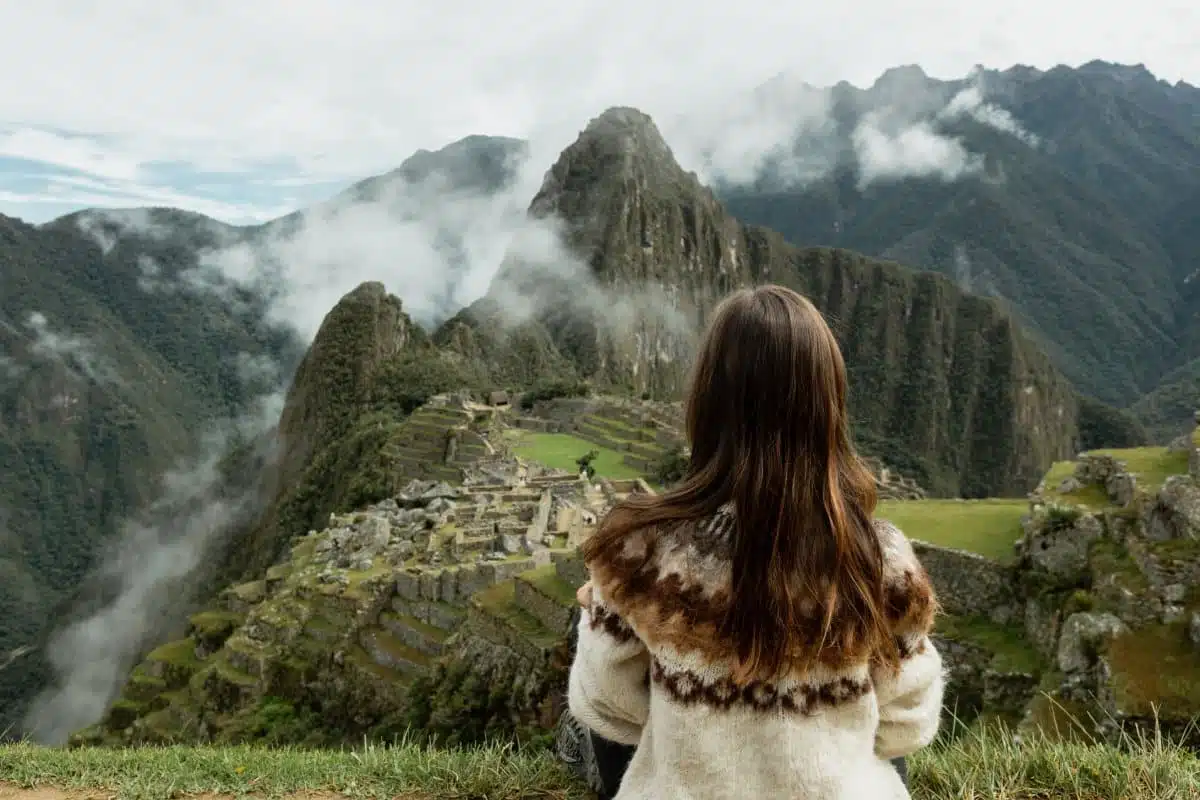Peru, a country where the past and present meet, offers an extraordinary journey through ancient cultures that have shaped the modern Peruvian identity. This explores the heart of Peru’s ancient culture, its archaeological wonders, enduring traditions, and the landscapes that have formed its history. From the iconic ruins of Machu Picchu to the lesser-known relics of civilizations long past, Peru invites travelers to explore its rich heritage. Each destination and activity in this guide has been selected to provide an immersive experience into the ancient culture of Peru, offering insights into its people and their daily lives, beliefs, and the natural world they revered.
1. Machu Picchu

Image Credit: Shutterstock / Anton_Ivanov
Machu Picchu, the Lost City of the Incas, symbolizes the ingenuity and spirituality of ancient Peruvian culture. Perched high in the Andes, this UNESCO World Heritage site was built in the 15th century and abandoned just over 100 years later, remaining hidden from the outside world until its rediscovery in 1911. The site encompasses over 150 buildings, ranging from temples and sanctuaries to baths and houses, all constructed with a precision that baffles modern engineers. The Intihuatana stone, the Temple of the Sun, and the Room of the Three Windows stand as testaments to the Incas’ astronomical knowledge and religious devotion.
Insider’s Tip: To fully appreciate the majesty of Machu Picchu, consider hiking the Inca Trail, which offers breathtaking views and a deeper connection to the Incas’ sacred landscape. Book well in advance, as permits are limited and sell out quickly.
When to Travel: The dry season from May to October offers the clearest skies and safest hiking conditions.
How to Get There: Most visitors travel to Machu Picchu from Cusco, taking a train to Aguas Calientes and then a bus up to the ruins.
2. The Nazca Lines
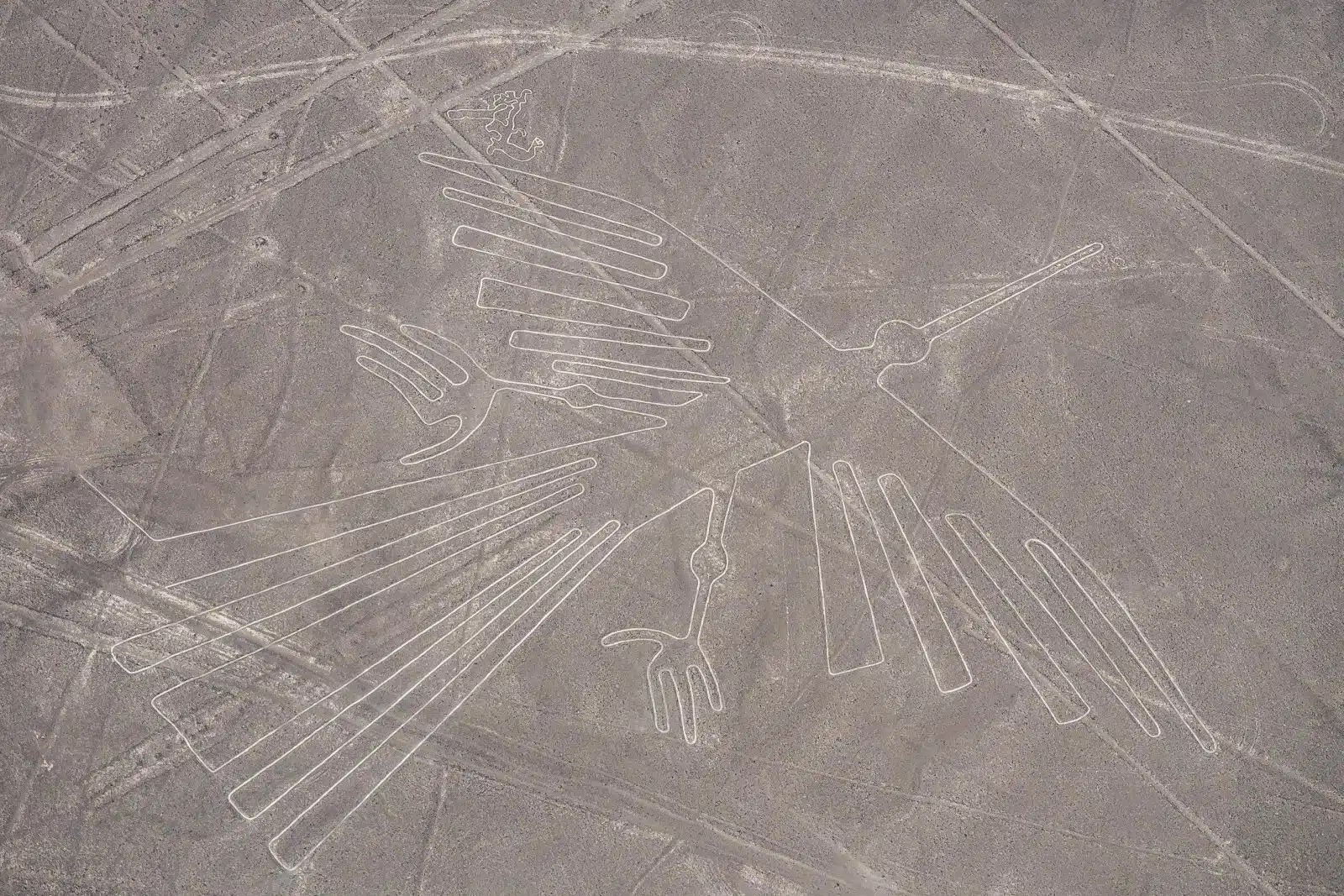
Image Credit: Shutterstock / Robert CHG
The Nazca Lines in the arid Peruvian coastal plain are a series of large ancient geoglyphs that have mystified archaeologists and historians for decades. Created by the Nazca culture between 500 BCE and 500 CE, these figures range from simple lines and geometric shapes to intricate depictions of animals, plants, and mythical beings, some stretching over 200 meters across. The purpose of the lines remains a topic of debate, with theories suggesting they served as astronomical calendars, religious symbols, or even offerings to the gods.
Insider’s Tip: The best way to view the Nazca Lines is from the air. Several companies offer flights from the nearby town of Nazca, providing a bird’s-eye view of these enigmatic creations.
When to Travel: The lines can be visited year-round, but the clearest conditions are from April to October.
How to Get There: Nazca is accessible by bus from Lima or Arequipa. Flights over the lines depart from Maria Reiche Neuman Airport in Nazca.
3. Sacred Valley of the Incas
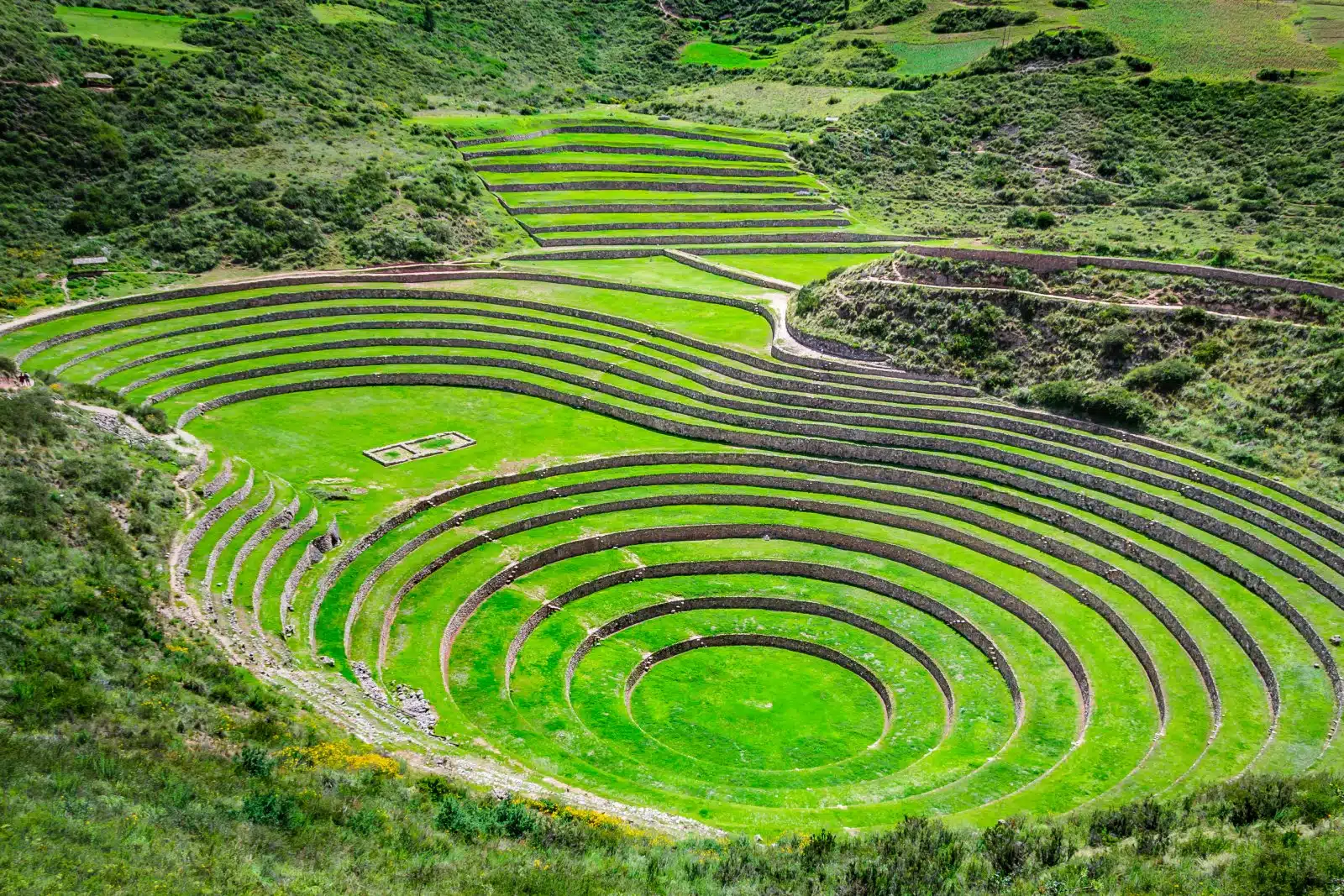
Image Credit: Shutterstock / Tetyana Dotsenko
The Sacred Valley of the Incas, between Cusco and Machu Picchu, is a lush valley that was the heart of the Inca Empire. Rich in archaeological sites, the valley includes key locations such as Ollantaytambo, Pisac, and Chinchero. These sites feature impressive terracing, ruins of temples and fortresses, and living examples of Inca engineering prowess. The valley was a crucial area for maize production in the empire and held great spiritual significance for the Incas, evidenced by the numerous ceremonial sites and natural features regarded as sacred.
Insider’s Tip: Spend a day exploring the Pisac market, where you can find traditional crafts and textiles made by local artisans, offering a glimpse into the continuity of cultural practices in the valley.
When to Travel: The best time to visit is during the dry season, from May to October, when the weather is more favorable for exploring the ruins.
How to Get There: The Sacred Valley is easily accessible from Cusco by bus, taxi, or organized tours, often including visits to multiple sites.
4. Kuelap Fortress
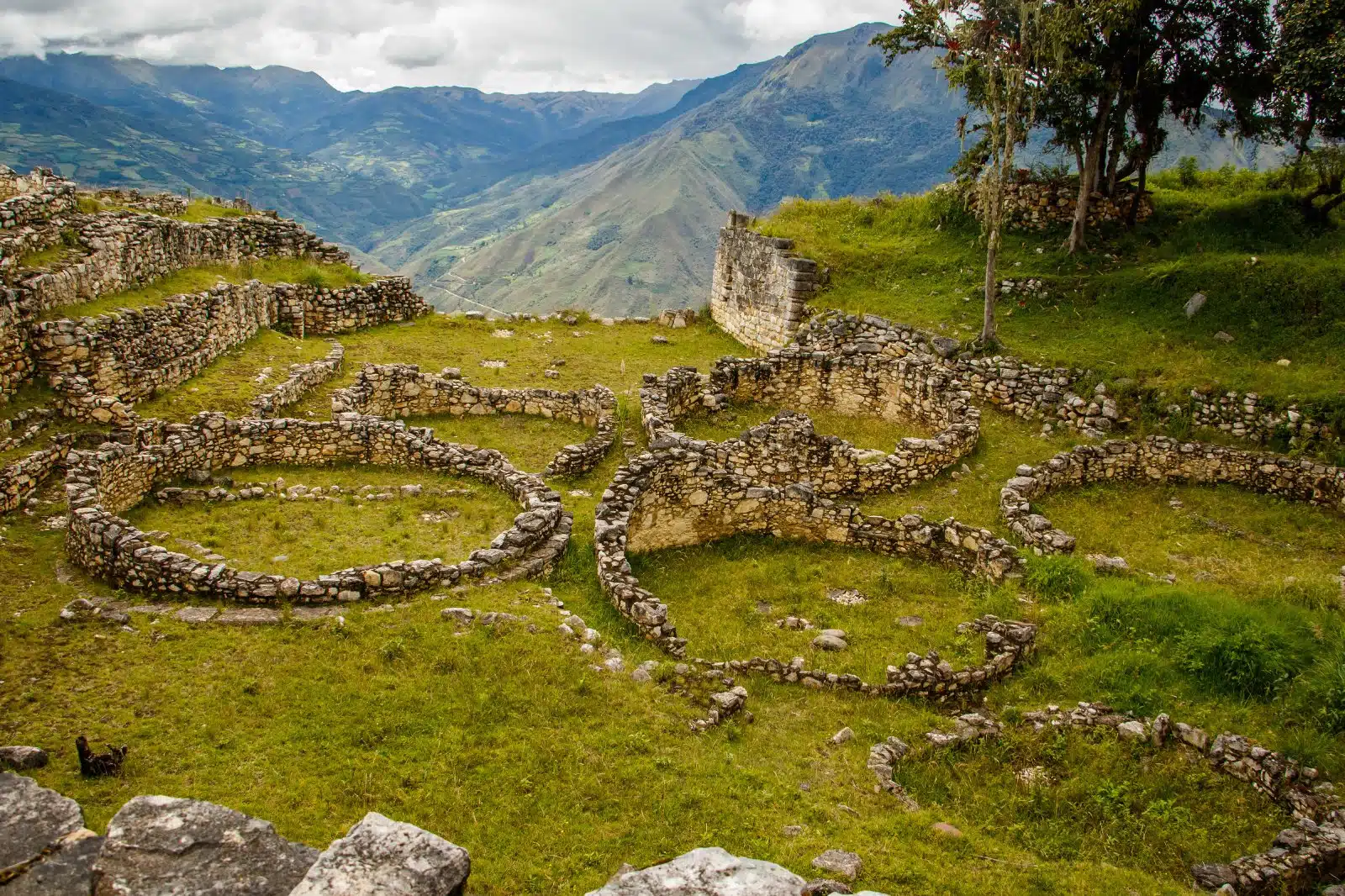
Image Credit: Shutterstock / Ludmila Ruzickova
The ancient fortress of Kuelap, often called the “Machu Picchu of the north,” was built by the Chachapoyas, also known as the “Warriors of the Clouds.” This massive stone structure on a ridge overlooking the Utcubamba Valley dates back to the 6th century. It is surrounded by imposing walls that reach up to 20 meters in height and contains over 400 circular stone houses, suggesting a significant population. The site is adorned with intricate carvings and friezes, some depicting the jaguar, a sacred animal in Chachapoyas culture.
Insider’s Tip: Combine your visit to Kuelap with a trip to the nearby Gocta Falls, one of the tallest waterfalls in the world, to experience the natural beauty of the Amazonas region.
When to Travel: The best time to visit Kuelap is during the dry season, from June to September, to avoid the heavy rains that can make access difficult.
How to Get There: Kuelap is accessible from the city of Chachapoyas. You can take a cable car from the nearby town of Tingo Nuevo, which offers a scenic route to the site.
5. Sillustani Burial Towers
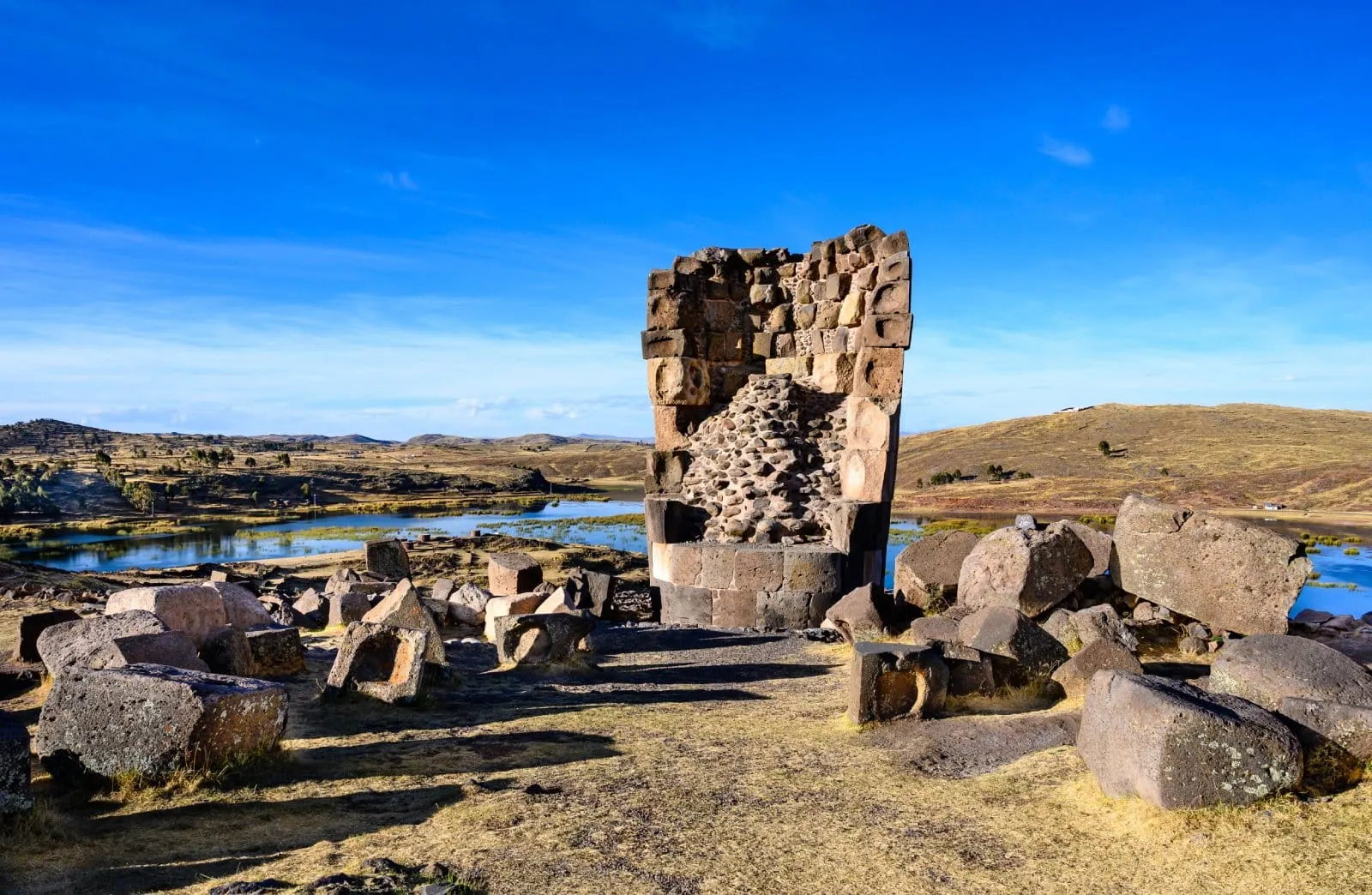
Image Credit: Shutterstock / Boris-B
The Sillustani burial towers, or chullpas, are located near Puno, on the shores of Lake Umayo. The pre-Incan Colla people built these cylindrical towers, which were later used by the Incas and served as tombs for nobility. The towers are architecturally significant, with some reaching heights of up to 12 meters, and are constructed with remarkable precision. The site offers insights into the funerary practices and beliefs of the ancient Andean cultures, which revered their ancestors and believed in an afterlife.
Insider’s Tip: Visit Sillustani in the late afternoon to enjoy the sunset over Lake Umayo, which creates a stunning backdrop for the towers.
When to Travel: The site can be visited year-round, but the dry season from May to October offers clearer skies and easier access.
How to Get There: Sillustani is a short drive from Puno, and many local tour operators offer half-day trips to the site.
6. The Moche Route
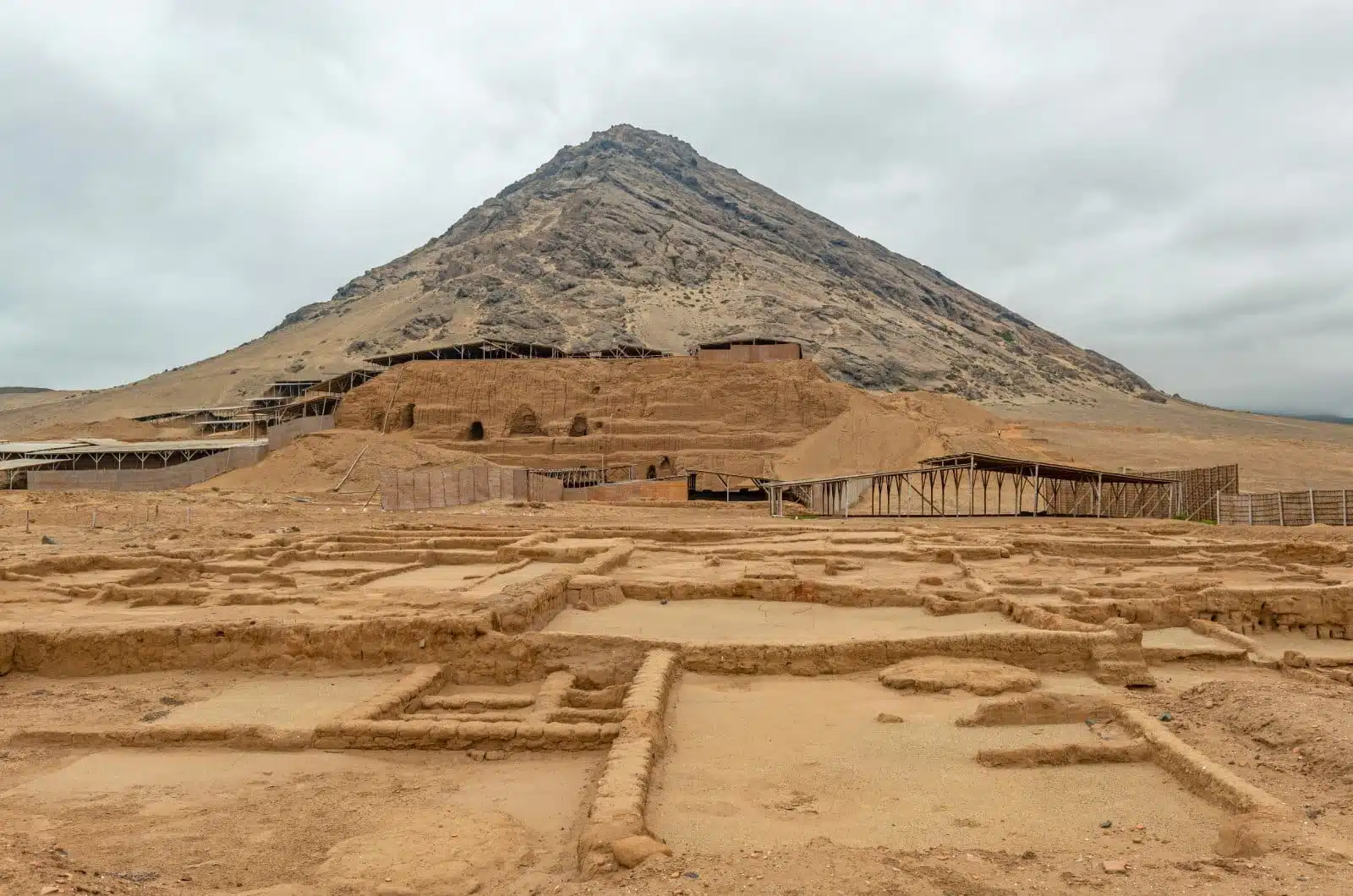
Image Credit: Shutterstock / SL-Photography
The Moche Route takes you through the northern coast of Peru, exploring the rich heritage of the Moche civilization, which flourished from 100 to 800 CE. This route includes visits to the Huacas del Sol y de la Luna (Temples of the Sun and Moon), the former being one of the largest adobe structures in the Americas, and the Royal Tombs of Sipán Museum, where the treasures of the Lord of Sipán are displayed. The Moche are renowned for their sophisticated pottery, metallurgy, irrigation systems, and monumental adobe temples and pyramids.
Insider’s Tip: Visit the El Brujo Archaeological Complex, where you can see the Cao Viejo pyramid and the Lady of Cao’s mummy, a high-ranking priestess or ruler of the Moche culture.
When to Travel: The northern coast of Peru is best visited during the dry season, from December to April, when the weather is warmer and drier.
How to Get There: The Moche Route is accessible from the city of Trujillo, which has an airport with flights from Lima. Local tour operators offer guided tours of the Moche sites.
7. Caral-Supe
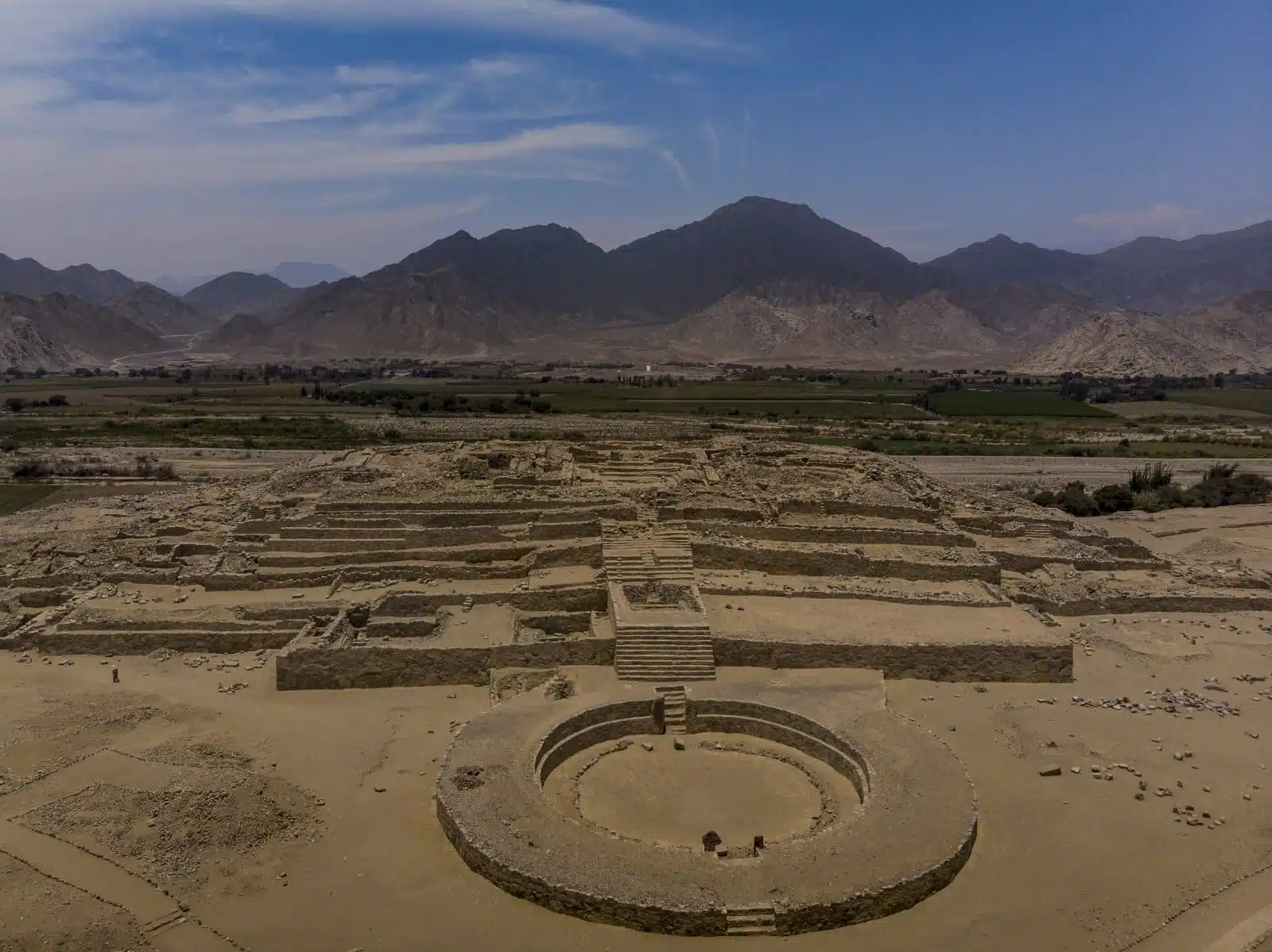
Image Credit: Shutterstock / Wirestock Creators
The sacred city of Caral-Supe, located in the Supe Valley, is one of the oldest centers of civilization in the Americas, dating back to approximately 2600 BCE. This UNESCO World Heritage site is considered the cradle of Andean culture, with its complex urban layout, monumental architecture, and evidence of advanced social, political, and religious practices. The site includes six large pyramidal structures, residential areas, public spaces, and an intricate system of irrigation canals. Caral was a peaceful society with no evidence of warfare, focusing instead on agriculture, trade, and the development of music and arts.
Insider’s Tip: Attend one of the guided tours that include musical performances using replicas of ancient instruments found at the site, offering a unique insight into the cultural life of the Caral people.
When to Travel: Caral-Supe can be visited year-round, but the cooler months from April to November are more comfortable for exploring the site.
How to Get There: Caral is located about 200 kilometers north of Lima. The site can be reached by car or bus, with the journey taking approximately 4 hours from the capital.
8. Chan Chan
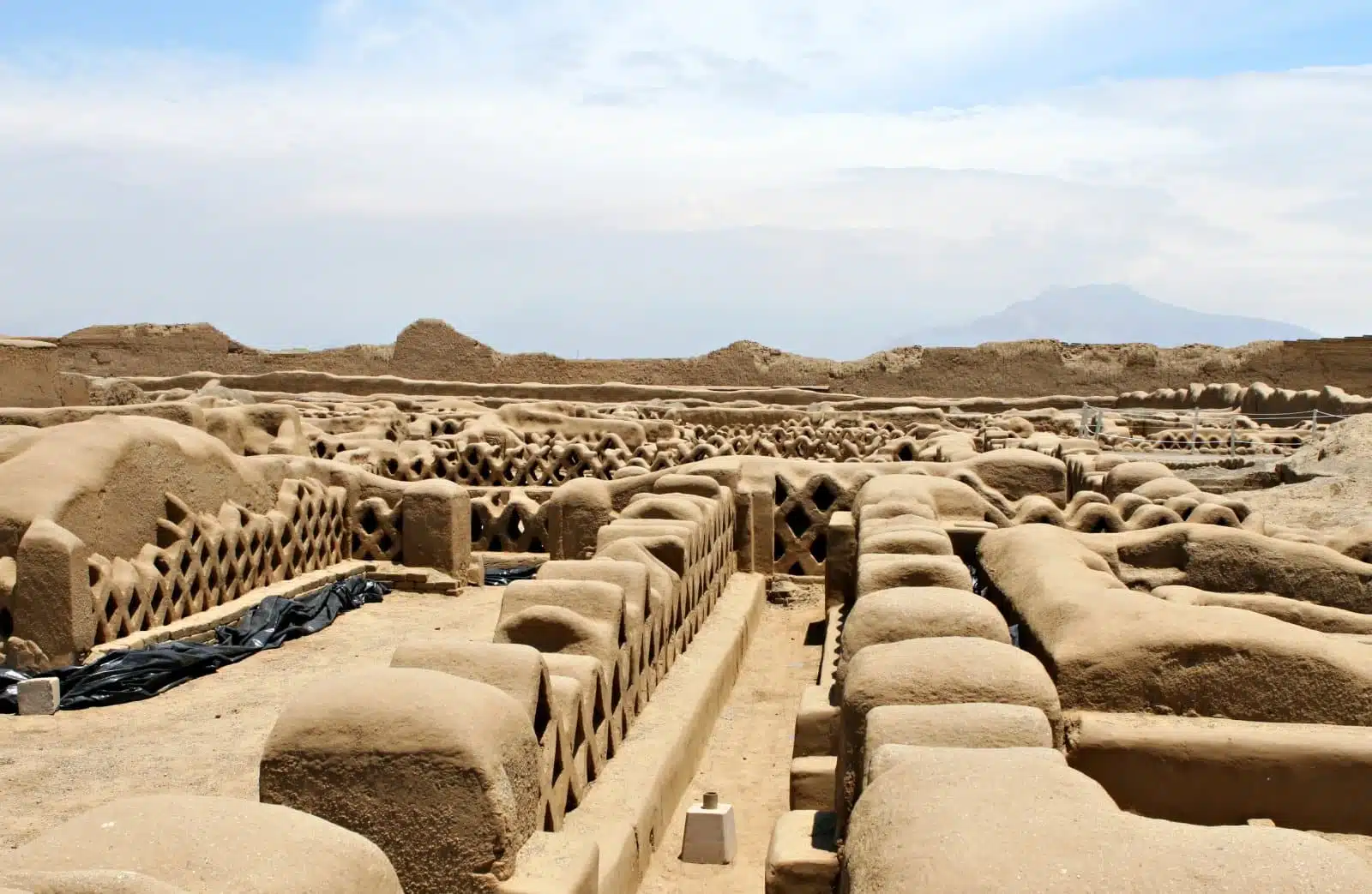
Image Credit: Shutterstock / Michael Zysman
Chan Chan, the largest pre-Columbian city in South America, was the capital of the Chimu Kingdom, which thrived from 900 to 1470 CE. This vast adobe city is located near the modern city of Trujillo and is recognized as a UNESCO World Heritage site. Chan Chan is notable for its intricate adobe architecture, including palaces, temples, plazas, and water reservoirs, all adorned with elaborate friezes depicting marine and agricultural themes. The city reflects the Chimu’s advanced engineering skills, particularly in water management, which is crucial for survival in the arid coastal environment.
Insider’s Tip: Visit the Tschudi Palace, one of the few sections of the site that has been partially restored and is open to the public, to see the best-preserved examples of Chan Chan’s architectural and decorative artistry.
When to Travel: The best time to visit Chan Chan is during the dry season, from December to April, when the weather is warmer and the site is more accessible.
How to Get There: Chan Chan is located just outside Trujillo. The site can be easily reached by taxi or organized city tours.
9. The Sacred City of Pachacamac
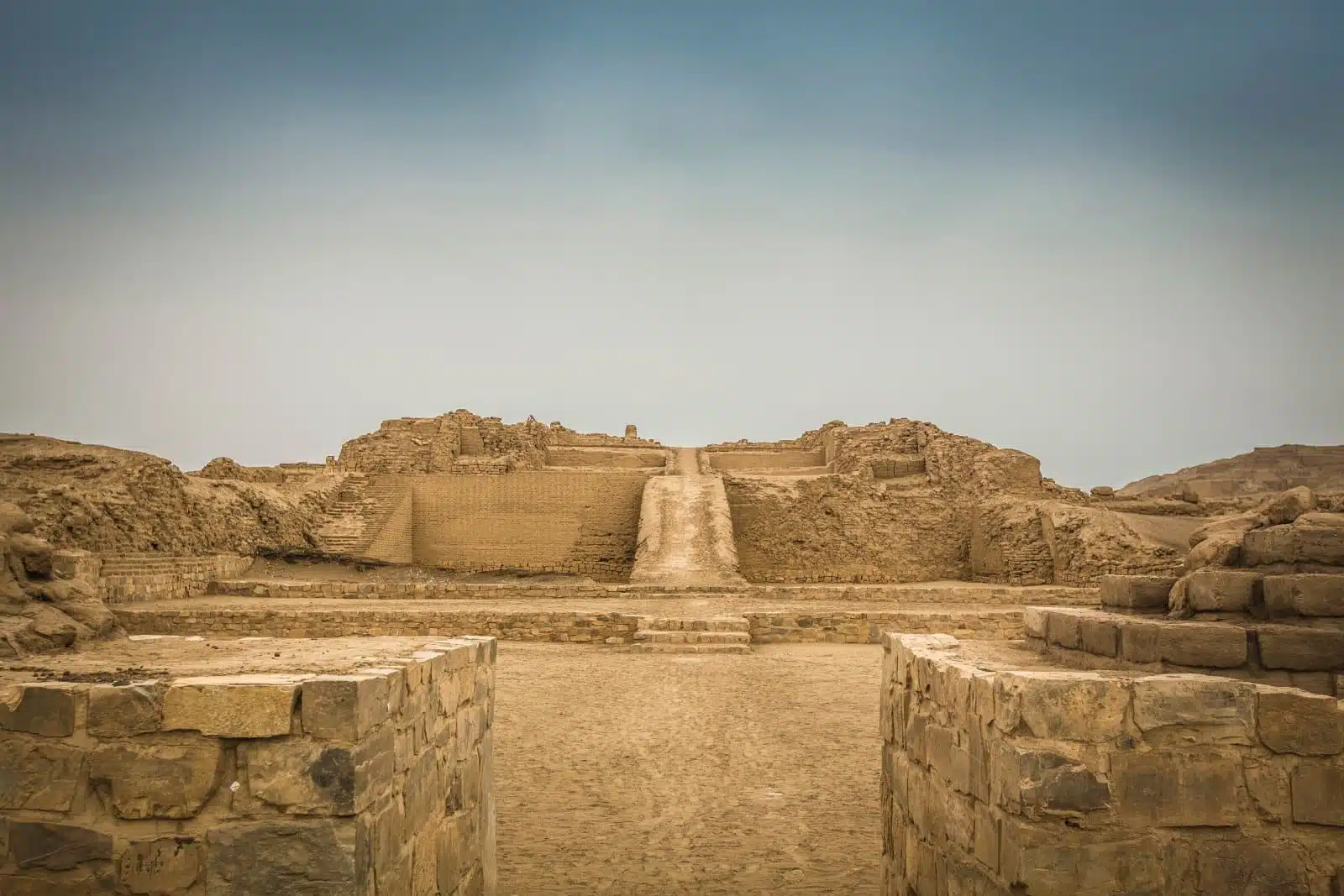
Image Credit: Shutterstock / Christian Declercq
The sacred city of Pachacamac, situated about 40 kilometers southeast of Lima, was an important ceremonial center for pre-Inca and Inca civilizations, including the Wari and Ychsma cultures. The site spans over 600 hectares and includes pyramids, temples, and plazas built between 800 CE and the arrival of the Spanish. Pachacamac was dedicated to worshipping the creator god Pacha Kamaq, and it was a major pilgrimage center, attracting worshippers from far and wide who sought oracles and healing.
Insider’s Tip: Don’t miss the on-site museum, which houses artifacts recovered from the site, including ceramics, textiles, and mummies, providing a comprehensive overview of the site’s significance and history.
When to Travel: Pachacamac can be visited year-round, but the cooler months from May to October offer more pleasant temperatures for exploration.
How to Get There: Pachacamac is easily accessible from Lima by car or public transport. Many tour operators in Lima offer half-day tours to the site.
10. The Wari Ruins
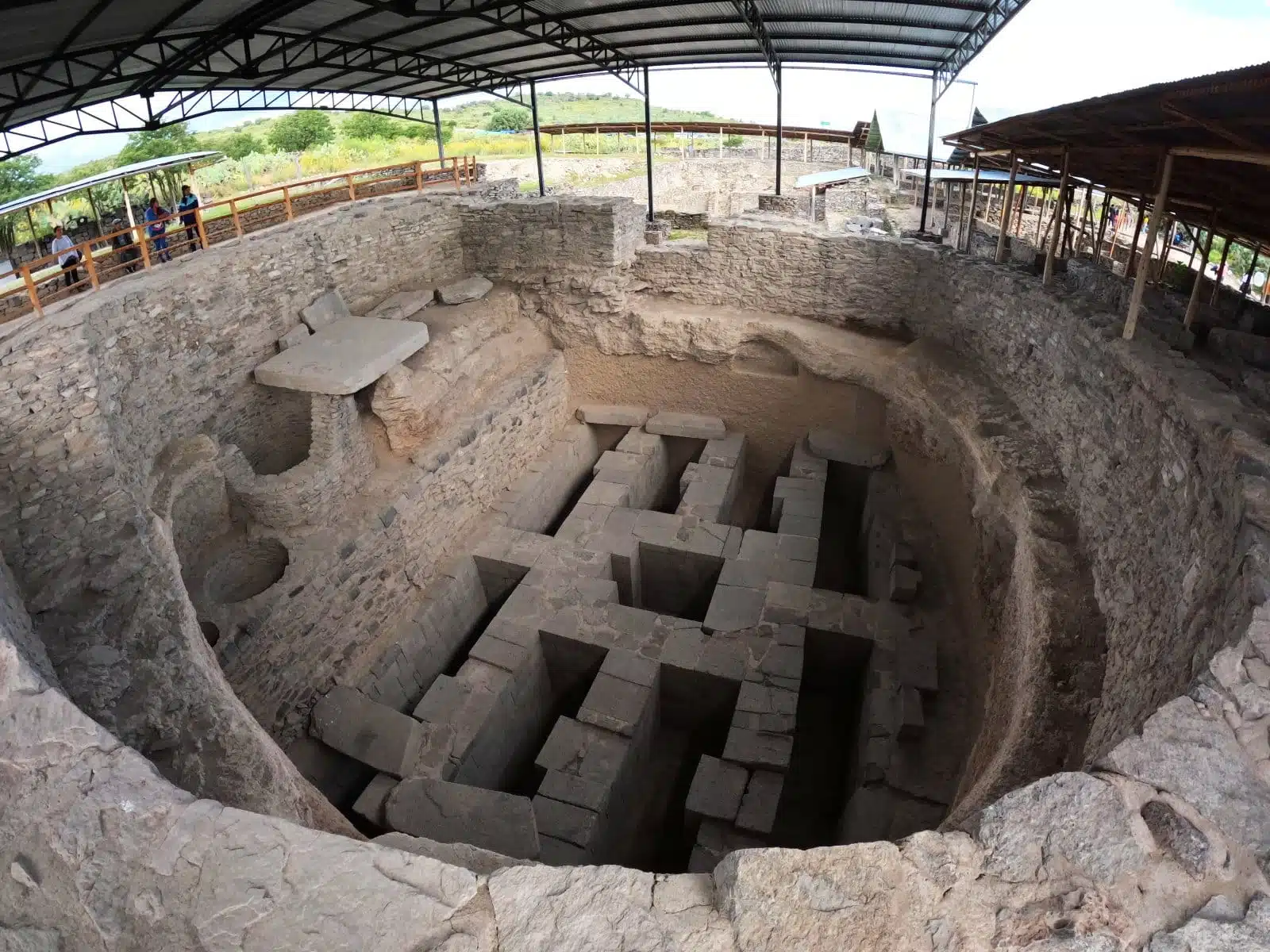
Image Credit: Shutterstock / RONY – Espacio Creativo
The Wari Empire, which predates the Inca civilization, was the first to unite ancient Peru’s diverse cultures and territories under a single administrative and economic system. The Wari ruins, located near the city of Ayacucho, offer a glimpse into this influential but less well-known culture. The site includes the remains of administrative centers, temples, residential areas, and an extensive network of roads and agricultural terraces. The Wari were known for their architectural innovations, including the use of terracotta pipes for irrigation and sewage and their artistic achievements in textiles and ceramics.
Insider’s Tip: Combine your visit to the Wari ruins with a trip to the nearby Quinua village, known for its pottery and as the site of the Battle of Ayacucho, a decisive conflict in Peru’s war for independence.
When to Travel: The best time to visit the Wari ruins is during the dry season, from April to October, when the weather is more favorable for exploring the site.
How to Get There: The Wari ruins are located about 25 kilometers northeast of Ayacucho. The site can be reached by taxi or organized city tours.
The Bottom Line
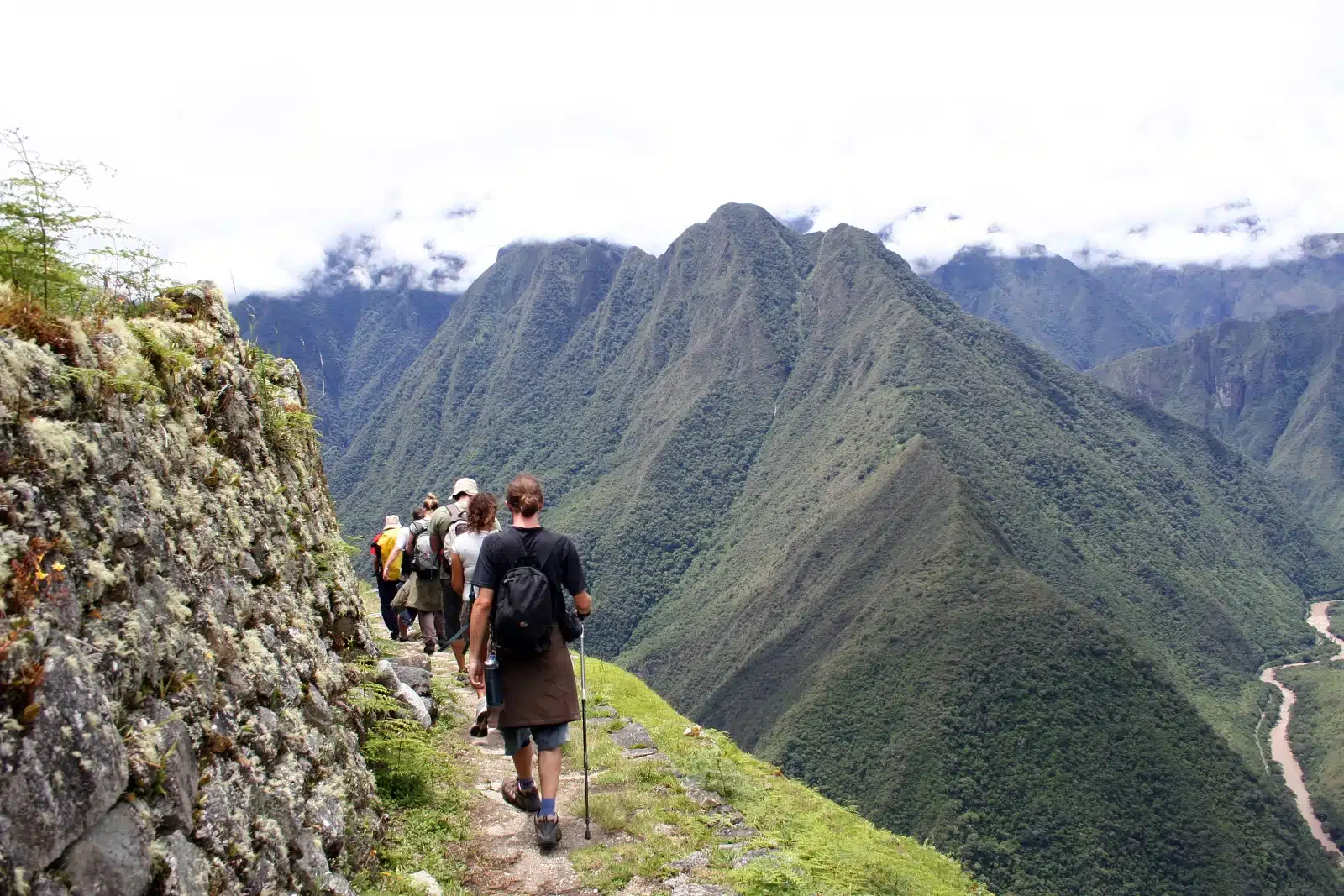
Image Credit: Shutterstock / J Duggan
Exploring the ancient culture of Peru offers a window into the sophisticated societies that once thrived in this land. From the architectural marvels of Machu Picchu to the enigmatic Nazca Lines, each site tells a story of innovation, spirituality, and resilience. As you journey through these ancient landscapes, remember to approach with respect and curiosity, seeking to understand the profound connections between the past and present. Peru’s ancient culture is not just a relic to be observed but a living heritage that continues to shape the country and its people. Embrace the opportunity to learn, explore, and be transformed by the rich tapestry of history and culture that Peru offers.
More From The Green Voyage
Top 10 Trending Travel Destinations 2024
6 Essential Banking Apps for International Travel – Managing Your Finances on the Go
Traveling With Kids – 10 Tips to Create Memorable Family Holidays
The post The Ancient Culture of Peru first appeared on The Green Voyage.
Featured Image Credit: Shutterstock / Image Credit: Shutterstock / Denys.Kutsevalov.
For transparency, this content was partly developed with AI assistance and carefully curated by an experienced editor to be informative and ensure accuracy.
Tips for Trip Success
Book Your Flight
Find an inexpensive flight by using Kayak, a favorite of ours because it regularly returns less expensive flight options from a variety of airlines.
Book Your Hotel or Special Accommodation
We are big fans of Booking.com. We like their review system and photos. If we want to see more reviews and additional booking options, we go to Expedia.
You Need Travel Insurance!
Good travel insurance means having total peace of mind. Travel insurance protects you when your medical insurance often will not and better than what you get from your credit card. It will provide comprehensive coverage should you need medical treatment or return to the United States, compensation for trip interruption, baggage loss, and other situations.Find the Perfect Insurance Plan for Your Trip
